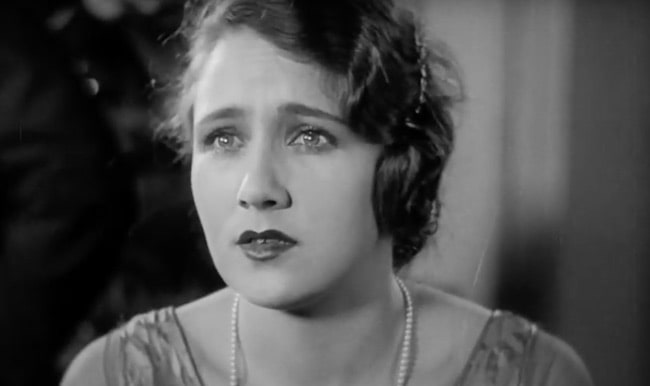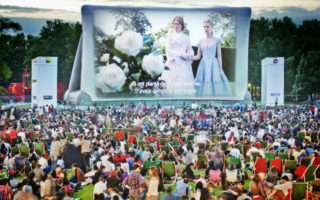Three Short French Film Classics Available on YouTube
- SUBSCRIBE
- ALREADY SUBSCRIBED?
BECOME A BONJOUR PARIS MEMBER
Gain full access to our collection of over 5,000 articles and bring the City of Light into your life. Just 60 USD per year.
Find out why you should become a member here.
Sign in
Fill in your credentials below.
With the Great Corona Hiatus upon us, Paris’s cinemas are shuttered and enjoying movies has become an endless variation on “home entertainment”: TV, Netflix and other streaming platforms, the odd Internet link, dusted-off DVDs. VHS anyone? How about the laser disk moldering in the basement? Seriously, for a look at some classic but delightfully quirky French film culture go no further than YouTube on whatever device is at hand. The following three suggestions are freely available and fairly short, though not all are available in English or with subtitles. All happen to deal directly or indirectly with a catastrophe affecting human life, individual or social, making them not downers but, as we used to say, relevant.
Une Histoire d’Eau (literally A Story of Water), 1958, 20 minutes. This film, half-documentary, half-romcom, was co-directed by Jean-Luc Godard and François Truffaut; at the very beginning of their careers. They’d soon become leaders of the New Wave, then diverge as proponents of very different approaches to cinema, even becoming bitter rivals. It’s strange but wonderful to see their two visions fused into one, like an embryo before it splits into twin siblings.
The story of water is also the story of a young woman who insouciantly goes about her business in the new abnormal: the aftermath of a devastating (and real) flood. That includes a love affair with a young man. Taking a boat, or lounging on the shore, the young lovers might be the subjects of an Impressionist artist on the banks of the Seine. Except that we’re in post-war France, and instead of painters with a brush we have two young Cahiers du Cinéma critics with cameras.
It’s impossible to neatly separate out the respective contributions made by the two filmmakers. Both were influenced by the ethnographic documentaries of Jean Rouch and the landscapes in American westerns, so the idea of using the flooded settings was certainly a common inspiration. The romance evokes Truffaut’s work, though its prickly side reminds us of Godard’s films. The soundtrack consisting solely of a voice-over by the young woman, a monologue filled with literary allusions and ironic asides, is pure Godard.
The sense we get is of young people imperturbable in the face of natural catastrophe, not only exploring the flooded landscape but insisting on having their love story in the middle of it. We should also remember that when the film was made there was not only a natural disaster going on, but a man-made one traumatizing the French nation: the Algerian war of independence. Godard went on to depict people caught up in other no-man’s-lands: the infinite traffic jam in Weekend, the blighted urbanscape in Alphaville.
La Jetée (The Jetty) takes us to a post-apocalyptic future. There is no FX spectacle—the precise nature of the catastrophe is left mysterious (to the viewer, at least). When it was made in 1962 the audience assumed it was about a nuclear holocaust. Now we might speculate about a biological or climatological disaster. The post-apocalyptic movie is mixed with the time-travel genre—a wish-fulfilment dream of escaping cataclysm.
The director, Chris Marker was a visionary documentary filmmaker and film-essayist who worked with the New Wave but wasn’t an integral part of it. He was too busy traveling around the world to commune with other intellectuals on the Left Bank. He made documentaries about China (Dimanche à Pekin), Siberia (Lettre de Sibérie), Israel (Histoire d’un Combat) and Cuba (Cuba Si). He returned to make a film about French life and attitudes, directed in 1962, at the end of the Algerian War, but whose mood and title (Le Joli Mai) oddly prefigure the events of 1968. The subliminal unease undoubtedly affected La Jetée, made the same year.
In form, La Jetée is experimental, composed of sequences of still images. This works much better than you might think, perhaps because it’s for a short duration. On a basic level it has the “static motion” of a graphic novel, along with the surreal quality of a photomontage collage. The static images are set off by what sounds like the voice-over of a nightmare, tense but matter of fact. The protagonist tracks down certain images that have been haunting him back into his past. What he finds (or found) is ironic and unexpected, to say the least.
Un Chien Andalou is a surrealist milestone and even for non-cinephiles was a success de scandale for many years because it contained the ultimate gross-out—a scene in which a razor approaches a woman’s eye and … (fill in the rest and say ewww!). The scene isn’t really what is seems, and has been outgrossed by now, but Un Chien Andalou remains a very sharp-edged little gem.
The film is considered a French classic though it was made by a pair of Spaniards, Luis Buñuel and Salvador Dali, and the title translates as An Andalusian Dog. It was made in Paris in 1928, and the two artists lived a crucial part of their lives there, essential members of the Surrealist movement. Buñuel would have a long career as a filmmaker, making numerous masterpieces in different styles, in France, Spain, and Mexico.
Dali would become renowned as a surrealist painter, celebrity, and as the operator of an assembly line of artistic product. His other claim to cinematic fame is designing the dream sequences in Alfred Hitchcock’s psychoanalytic thriller Spellbound. His very latest claim was posthumous—being exhumed to determine if he was the father of an illegitimate heir—he wasn’t, but his moustache was revealed to still be in fine shape, a surrealist relic.
Un Chien Anadalou is silent (except for a musical soundtrack), so subtitles or dubbing aren’t relevant. It’s a montage of images, as in La Jetée, but moving images. Taking in each one is akin to lifting a rock and watching strange bug-life teeming and crawling underneath. It’s moving in another sense: the surrealists tried to dig up potent associations from dream and memory. When this works, it’s like touching a live wire directly from the subconscious.
There’s no continuous narrative. It begins with a title card reading “Once Upon a Time”, and indeed the film’s scenes recall the nightmare world of fairy-tales. Other title cards have nonsensical chronological tags, spoofs of conventional continuity. As in Une Histoire d’Eau we follow the progress of a young man and woman, but in this case through freakish encounters and their own bizarre dramas (in one she fends him off with a tennis racket). The “catastrophe” is sexual and psychological, with a strong dose of clerical repression. The film was made before the Spanish Civil War and Franco, but during another stultifying Spanish dictatorship, that of Miguel Primo de Rivera, which qualifies as one more man-made disaster.
The film was a Parisian sensation. Buñuel created even more of a stir with his first feature, (The Golden Age, 1930), a sequel of sorts, which reproduced the same violent and incongruous images in a narrative format. It sparked riots and was banned. His later films, whether harshly realistic (Los Olvidados, 1950) or sophisticated satire (The Discreet Charm of the Bourgeoisie, 1972), always had surrealistic violence seething under the surface, and on occasion spurting out. Un Chien Andalou was the well-spring of his oeuvre. The American Surreal of David Lynch, Coen Brothers, et al. is inconceivable without the example of this short film of about seventeen minutes.
In all three films, individuals face a cataclysm within the context of their own lives. This may be whimsical or grim, but it’s always extraordinary. Perhaps that fits in with our own contemporary challenge. Like the films’ protagonists, many of us are straining at the bit of circumstance and praying (or baying) for the chance to throw the bit aside. And as these films show, if you want something bad enough, you’ll get it.
Lead photo credit : Lya Lys. Photo © L'Age D'Or youtube clip




